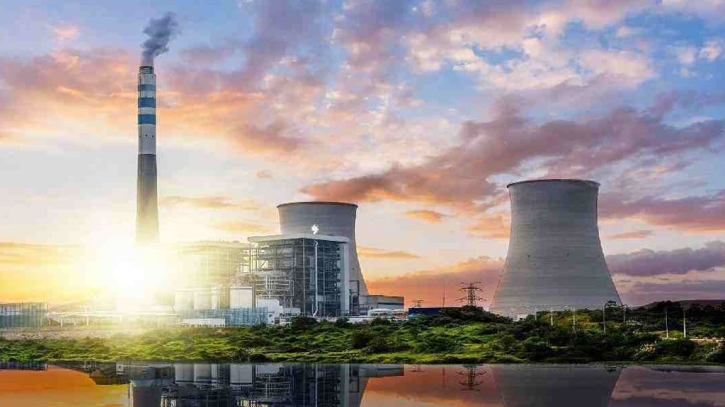
Understanding the Pros and Cons of the Rampal Power Plant: A Deep Dive into Its Economic and Environmental Implications
Rampal Power Plant: Benefits and Drawbacks
Introduction
The Rampal Power Plant, a coal-based power station located in Bagerhat, Bangladesh, is a joint venture between India and Bangladesh that has attracted widespread attention and sparked ongoing debate. Set near the Sundarbans, this power plant was designed to supply electricity to a rapidly growing nation. However, its proximity to a globally significant ecological region has raised questions about the environmental impact and sustainability of such a project.
As Bangladesh continues to pursue energy security in line with its economic ambitions, the Rampal Power Plant stands as a contentious example of development versus conservation. This article will analyze both the advantages and disadvantages of the Rampal Power Plant, exploring the potential benefits it brings as well as the concerns it raises.
Advantages of the Rampal Power Plant
1. Boost to Electricity Production
One of the primary advantages of the Rampal Power Plant is its capacity to meet Bangladesh’s increasing demand for electricity. With a planned output of 1,320 megawatts, the plant will significantly enhance the nation’s power generation capacity. This increase in electricity supply is expected to help alleviate the power shortages and load-shedding that have plagued industries and households across the country.
Consistent power generation will be especially beneficial for the country’s industrial sector, providing stable energy to support manufacturing and other energy-intensive industries. As Bangladesh looks to expand its economic footprint, the need for reliable power sources becomes more critical, and Rampal has the potential to fulfill that role.
2. Energy Diversification
The Rampal Power Plant contributes to Bangladesh’s efforts to diversify its energy mix. While the country has historically relied heavily on natural gas for electricity generation, recent shortages have prompted a shift toward other sources. Coal, despite its environmental impact, remains one of the most cost-effective and reliable sources of energy. The Rampal project provides Bangladesh with an additional power source, thereby reducing its dependency on any single energy type and enhancing energy security.
Diversifying the energy portfolio is essential for the country’s long-term stability, as it allows for greater flexibility in responding to fluctuations in global fuel prices or shortages in any particular resource.
3. Economic Development and Job Creation
The Rampal Power Plant has been a major driver of local economic development since the project began. Construction of the plant has led to the creation of thousands of jobs in various fields, including engineering, construction, and administration. Furthermore, the influx of workers has boosted the local economy, creating demand for services and products in surrounding areas.
Once the plant is fully operational, it is expected to generate long-term employment opportunities in both the power generation sector and in related industries. This will further stimulate economic growth, especially in the region around the plant.
4. Improved Access to Energy for Rural Areas
As a developing nation, many rural areas in Bangladesh still lack reliable access to electricity. The Rampal Power Plant aims to change that by increasing the overall availability of power in the national grid. Rural electrification programs will benefit from the added electricity, which can help improve living standards and promote development in less urbanized areas of the country.
Electricity access has a direct correlation with economic development, and this project could provide new opportunities for businesses, healthcare facilities, and schools in these rural regions.
Disadvantages of the Rampal Power Plant
1. Threat to the Sundarbans Ecosystem
The most vocal criticism of the Rampal Power Plant stems from its proximity to the Sundarbans, a UNESCO World Heritage site known for its unique ecosystem and biodiversity. Environmentalists fear that the plant’s emissions could damage this fragile environment, which is home to many endangered species, including the Bengal tiger.
Coal-fired power plants are known for releasing sulfur dioxide, nitrogen oxides, and particulate matter, all of which can harm both the environment and human health. While measures have been proposed to minimize pollution, many worry that the plant’s environmental safeguards may not be sufficient to prevent long-term damage to the Sundarbans and its surrounding water bodies.
2. Air and Water Pollution
As with most coal-fired power plants, the Rampal plant poses significant risks related to pollution. The burning of coal produces large amounts of carbon dioxide, a greenhouse gas that contributes to global warming. In addition to carbon emissions, pollutants such as sulfur dioxide and mercury can be released into the air, affecting air quality in nearby areas.
The potential for water pollution is another major concern. The power plant requires large amounts of water for cooling, and the discharge of heated water into local rivers could disrupt aquatic ecosystems. Furthermore, coal ash, which contains toxic heavy metals, could contaminate soil and water sources if not properly managed.
3. Health Risks for Nearby Communities
The environmental impact of coal-fired plants extends beyond nature and directly affects human health. Communities living near the Rampal Power Plant could experience negative health effects due to increased air pollution. Inhalation of pollutants like sulfur dioxide and particulate matter has been linked to respiratory problems, including asthma, bronchitis, and even heart disease.
The long-term health implications for people in surrounding areas could be severe if air quality deteriorates as a result of the plant’s operations. The challenge will be ensuring that health and safety regulations are strictly enforced to protect the well-being of those living near the facility.
4. Global Criticism and Opposition
The Rampal Power Plant has attracted significant international criticism, primarily from environmental organizations and human rights groups. Many argue that the construction of a coal plant in such an environmentally sensitive area contradicts global efforts to combat climate change. International bodies like UNESCO have expressed their concern about the plant’s potential impact on the Sundarbans, urging the government to reconsider its location or to ensure stringent environmental protections are in place.
Additionally, Bangladesh has faced criticism for its continued reliance on coal, even as many countries are phasing out coal-fired power in favor of renewable energy sources. This has placed the country in a difficult position, needing to balance immediate energy needs with long-term environmental responsibilities.
Addressing the Concerns: Balancing Development and Sustainability
The Rampal Power Plant brings into focus a fundamental challenge for Bangladesh: how to balance economic growth with environmental sustainability. On one hand, the plant promises to address critical energy shortages and support economic expansion, especially in underserved regions. On the other hand, the environmental and health risks associated with coal-fired plants are undeniable, particularly when such projects are located near ecologically sensitive areas like the Sundarbans.
It is crucial for the government and stakeholders to adopt the highest environmental standards and continually monitor the plant’s impact on its surroundings. Technological advancements, such as carbon capture and storage, may provide opportunities to reduce the plant’s carbon footprint, but these technologies must be rigorously implemented.
Furthermore, exploring renewable energy alternatives, such as solar or wind power, should remain a priority for Bangladesh as it seeks to diversify its energy sources without compromising environmental integrity. Large-scale coal projects like Rampal can provide short-term solutions, but they must be part of a larger energy strategy that prioritizes sustainability.
Conclusion: Navigating a Complex Future
The Rampal Power Plant represents a pivotal project for Bangladesh, with far-reaching implications for the country’s energy landscape, economic development, and environmental sustainability. Its advantages in terms of energy production, job creation, and economic growth are evident, but these must be weighed against the significant environmental and health concerns it raises.
The future of energy in Bangladesh must focus on striking a balance between meeting immediate needs and investing in sustainable, long-term solutions. While the Rampal Power Plant offers short-term relief from energy shortages, it should not detract from the country’s commitment to transitioning toward cleaner and more sustainable energy sources. As the world moves increasingly toward renewable energy, Bangladesh too must consider how projects like Rampal fit into its broader vision for a greener, more resilient future.
Call-to-Action:
The conversation surrounding the Rampal Power Plant is far from over. Stay informed about Bangladesh’s energy future and share your thoughts on the nation’s path to balancing development with environmental preservation. Let’s work together to support sustainable solutions for a better tomorrow.



